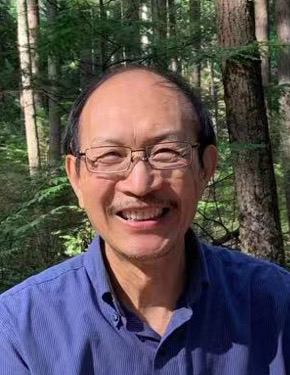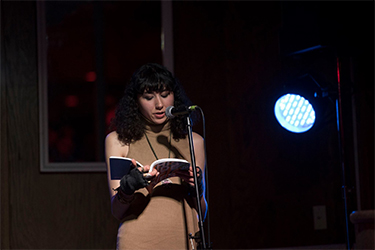Bilinguacultural: Safiya Hopfe in Conversation with Yuan Changming

Yuan Changming, whose poems “Yin/Yang vs. Water/Fire: Lesson One in Chinese Characters,” “Getting Along: A Bilinguacultural Poem,” and “Chinglish: A Brief History of Chinese in English” appear in The Malahat Review’s fall issue #216, discusses how he responds to work that moves him, productivity during the pandemic, and using Chinese for communication and English for self-expression in his Q&A with Malahat Review volunteer Safiya Hopfe.
Read “Yin/Yang vs. Water/Fire: Lesson One in Chinese Characters” here.
Yuan Changming, 11-time Pushcart nominee and multiple poetry award winner, is probably the world's most widely published contemporary poetry author who speaks Mandarin but writes English. Growing up in an isolated village, Yuan started to learn the English alphabet in Shanghai at age nineteen and authored several monographs on translation before leaving China as an international student. With a PhD in English from the University of Saskatchewan, Yuan currently lives in Vancouver, where he edits Poetry Pacific with Allen Yuan. Since mid-2005, Yuan has had poetry appear in nearly 1,900 literary outlets across 47 countries, which include Best Canadian Poetry (2009, 2012, 2014), the Best of the Best Canadian Poetry (2008-2017) & BestNewPoemsOnline. In 2021, Yuan served on the jury for Canada’s 44th National Magazine Awards (poetry category) and published his first poetry collection in Chinese《袁昌明诗选》as well as his 11th chapbook Limerence.
You said in an interview once that you tend to prefer reading and speaking in Mandarin, but writing and publishing in English. You also describe your poetry as “bilinguacultural.” These three poems in particular meditate on language’s potential and limitations in a distinct way. What does “bilinguacultural” mean to you, and how does thinking in two languages impact your creative process? Do you find the tension between the two languages limiting, expansive, or both?
To me, “bilinguacultural” simply means the ability to speak two languages and function as an instrument between the two cultures they represent respectively. However, it has not been so simple for me to be such a bilinguaculturalist. Because I did not begin to learn the English alphabet until I became an ESL major in Shanghai Jiaotong University, where I was often ridiculed for my “village accent” by my teachers and classmates alike, I have always felt uneasy when I speak English; fortunately, whenever inspired to write poetry, I find this second language of mine serving me well, even better than my mother tongue. In other words, I tend to use Chinese for communication, but English for self-expression. The reason is twofold. On the one hand, though I wrote quite a lot of poetry in Chinese in my late teens, I never got a single piece published before moving to Canada as an international student; it was not until several decades later that I had my first poem accepted for publication, and that in English! Resulting from this significant encouragement, I have ever since become adapted to writing poetry in English. On the other hand, as a lifelong student and teacher of English, I have gained much more knowledge about English than about Chinese, even than many native speakers of English have, in terms of grammar, semantics, rhetoric and literature. This is certainly quite paradoxical, but my life has really been full of such paradoxes or ironies, and being an English poetry writer with a Chinese cultural personality is just one of them. Realizing many words in the two languages are not merely linguistic symbols used for human communication, but also poetic vectors of a given culture, I have developed a strong interest in exploring their linguacultural significance through poetry and, in so doing, I find the “tension” or differences between English and Chinese to be far more expansive than limiting.
What did you hope to accomplish with the structural choices you made in these poems?
It may sound a bit overly ambitious, but I do hope the structural choices or the basic juxtapositional pattern I have adopted in these pieces will help establish “bilinguacultural” poetry as a sub-genre to be practiced and promoted at least by, for and among bilinguals. In an age characterized by more and faster cultural exchange or integration than ever before, such linguistically and culturally straddling verses will undoubtedly offer not only a deeper poetic experience but also a broader linguacultural viewpoint to the reader. Frankly speaking, if I could ever add something new to the Canadian literature or even English canon at all, I would consider this subgenre my most important contribution.
On a similar note: the list-like structure of these poems is noteworthy, and you seem to experiment with form often in your work. What do you find exciting or useful about the medium of poetry specifically, structurally or otherwise?
Definitely, I have always enjoyed experimenting with form in poetry writing, ranging from “free” sonnets to concrete poems, from what I call “monolines” to “one-act play” pieces, from the structural (like “siamese stanzas”) to the bilinguacultural. Furthermore, I have experimented extensively with titling, lining, spacing, punctuating, indenting and stanzaing. Having written more than three thousand poems in disparately different styles and on all kinds of subject matters thus far, I have become keenly aware that poetry can afford much more artistic possibilities than many would think. As an art form, poetry may have lost its traditional force of attraction to people especially in this e.age, but it is nevertheless a most effective way to express our most deeply held emotions and best thought ideas.
You have stated that you often write “parallel poems” and poetry as a response to or emulation of work which moves you. Is this the case for these pieces, and if so, what work helped inspire them?
Yes, I have written and published scores of individual “parallel poems,” many of which I think may be more engaging than the “proto” ones. In fact, I strongly wish to find a press willing to publish them side by side in a book form to render a “parallel read” to poetry lovers. However, bilinguacultural poems as a poetic subgenre mark my effort of invention rather than an attempt at emulation. Indeed, living and working in between two major languages and cultures almost all my life, I find it only too natural to have developed such experimental form as “straddling” stanzas. As in the case of my parallel poems, I have already published dozens of individual bilinguacultural pieces across English-peaking countries, including Canada, USA, Britain, Australia and South Africa, most of which seem to have been received quite well. Actually, just as 2021 has come to be my year of love poems—this year I have written (and published) dozens of love poems inspired by my long lost first love—2020 was my year of bilinguacultural poetry, as most of these cross-cultural pieces were drafted during this period. Given this, I might as well say it is the Pandemic that has made me particularly productive in poetrying since its onset.
Your work is rich with explorations of nature and place. How does your interaction with natural space guide your writing process and your relationship with creative inspiration?
As a profound lover of nature, I know my self-exile in the real world does not allow me to take two roads concurrently, but during my frequent inner travels or expeditions, I could maintain close contact with every place meaningful to me, such as the golden rice fields in my native village, the young pine trees in Mayuhe (the forest farm where I labored after graduation from high school during the notorious “Cultural Revolution”), the shapely hills in Zhangjiajie as well as the crystal-clear lake water in Banff. By constantly revisiting these locales in poetry as in memory and imagination, I feel as if living a plural life, a life where the real/physical and virtual/spiritual together with my pasts, my present and my futures can all be woven into the same fabric of artwork. Put another way, I draw poetic inspirations from three major sources—my reading, feeling, and imagining experiences. Without such strong emotional attachment to nature and place, I would never have been inspired to write some of my most deeply-felt poems, including the bilinguacultural ones, which embody nothing less than my spiritual or meditative returns to Chinese and English, the former standing for my native linguaculture, the latter for what I have chosen.

Safiya Hopfe
* * * * * * * *









